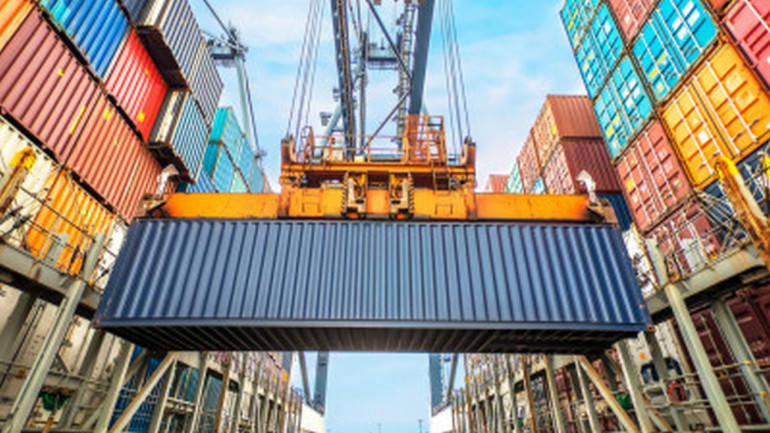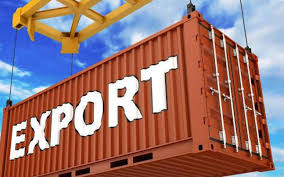The National Statistical Office (NSO), Ministry of Statistics and Programme Implementation has released the First Revised Estimates of National Income, Consumption Expenditure, Saving and Capital Formation for the financial year 2019-20 along with Second Revised Estimates for the financial year 2018-19 and Third Revised Estimates for the financial year 2017-18 (with Base Year 2011-12) as per the revision policy*. Earlier estimates for 2011-12 to 2018-19 were released vide press note dated 31st January, 2020 and Provisional Estimates of 2019-20 were released on 29th May, 2020.
2. The First Revised Estimates for the year 2019-20 have been compiled using industry-wise/institution-wise detailed information instead of using the benchmark-indicator method employed at the time of release of Provisional Estimates on 29th May, 2020. However, in view of the reduced corporate filings for the year 2019-20 due to prevalence of Covid-19, the estimates for the corporate sector might be significantly revised when more comprehensive data for the sector becomes available in the subsequent revisions. The estimates of GDP and other aggregates for the years 2017-18 and 2018-19 have undergone revisions on account of use of latest available data on agricultural production; industrial production (provisional results of Annual Survey of Industries (ASI): 2018-19 and final results of ASI: 2017-18); government data as available in budget documents (replacing revised estimates with actuals for the year 2018-19); reclassification of Non-Financial Private Corporate sector due to availability of MGT-7 data in 2017-18; comprehensive data available from various source agencies like Ministry of Corporate Affairs (MCA), Reserve Bank of India (RBI), National Bank for Agriculture and Rural Development (NABARD) etc. and additional data from State/UT Directorates of Economics and Statistics (DES).
3. The salient features of the estimates at aggregate level are given in the paras that follow.
Gross Domestic Product
4. Nominal GDP or GDP at current prices for the year 2019-20 is estimated at ₹203.51 lakh crore as against ₹188.87 lakh crore for the year 2018-19, showing a growth of 7.8 per cent during 2019-20 as compared to 10.5 per cent during 2018-19.
5. Real GDP or GDP at constant (2011-12) prices for the years 2019-20 and 2018-19 stands at ₹145.69 lakh crore and ₹140.03 lakh crore, respectively, showing growth of 4.0 per cent during 2019-20 and 6.5 per cent during 2018-19.
Industry-wise Analysis
6. Gross Value Added (GVA) at basic prices in different sectors of the economy at current and constant (2011-12) prices is presented in Statements 4.1 and 4.2 respectively. At the aggregate level, nominal GVA at basic prices has grown by 7.6 per cent during 2019-20 as against 10.7 per cent during 2018-19. In terms of real GVA, i.e., GVA at constant (2011-12) basic prices, there has been a growth of 4.1 per cent in 2019-20, as against 5.9 per cent in 2018-19.
7. The shares of broad sectors of the economy in terms of overall GVA during 2011-12 to 2019-20 and the annual growth rates are mentioned below:
| Year | Share in GVA at current prices (in %) | Growth in GVA at constant (2011-12) prices (in %) | Aggregate GVA
(₹ in lakh crore) |
|||||||
| Primary | Secondary | Tertiary | All | Primary | Secondary | Tertiary | All | Current | Constant | |
| 2011-12 | 21.7 | 29.3 | 49.0 | 100.0 | 81.1 | 81.1 | ||||
| 2012-13 | 21.3 | 28.7 | 50.0 | 100.0 | 1.4 | 3.6 | 8.3 | 5.4 | 92.0 | 85.5 |
| 2013-14 | 21.4 | 27.9 | 50.6 | 100.0 | 4.8 | 4.2 | 7.7 | 6.1 | 103.6 | 90.6 |
| 2014-15 | 20.9 | 27.3 | 51.8 | 100.0 | 1.2 | 6.7 | 9.8 | 7.2 | 115.0 | 97.1 |
| 2015-16 | 20.1 | 27.6 | 52.3 | 100.0 | 2.1 | 9.5 | 9.4 | 8.0 | 125.7 | 104.9 |
| 2016-17 | 20.4 | 27.0 | 52.6 | 100.0 | 7.3 | 7.5 | 8.5 | 8.0 | 139.7 | 113.3 |
| 2017-18 | 20.4 | 27.0 | 52.5 | 100.0 | 4.5 | 7.1 | 6.3 | 6.2 | 155.1 | 120.3 |
| 2018-19 | 19.8 | 26.8 | 53.4 | 100.0 | 2.2 | 5.8 | 7.2 | 5.9 | 171.6 | 127.4 |
| 2019-20 | 20.3 | 24.7 | 55.0 | 100.0 | 3.3 | -1.1 | 7.2 | 4.1 | 184.6 | 132.7 |
8. The growth in real GVA during 2019-20 has been lower than that in 2018-19 mainly due to relatively lower growth in ‘Mining and Quarrying’, ‘Manufacturing’, ‘Electricity, Gas, Water Supply & Other Utility Services’, ‘Construction’, ‘Trade, repair, Hotels and Restaurants’ and ‘Financial Services’ as may be seen from Statement 4.2. The growth rates of Primary sector (comprising Agriculture, Forestry, Fishing and Mining & Quarrying), Secondary sector (comprising Manufacturing, Electricity, Gas, Water Supply & Other Utility Services, and Construction) and Tertiary sector (Services) have been estimated as 3.3 per cent, -1.1 per cent and 7.2 per cent as against growth of 2.2 per cent, 5.8 per cent and 7.2 per cent, respectively, in the previous year.
Net National Income
9. Nominal Net National Income (NNI) or NNI at current prices for the year 2019-20 stands at ₹179.94 lakh crore as against ₹167.05 lakh crore in 2018-19, showing growth of 7.7 per cent during 2019-20 as against growth of 10.3 per cent in the previous year.
Gross National Disposable Income
10. Gross National Disposable Income (GNDI) at current prices is estimated at ₹206.98 lakh crore for the year 2019-20, while the estimate for the year 2018-19 stands at ₹191.78 lakh crore, showing a growth of 7.9 per cent for year 2019-20 as against growth of 10.8 per cent in the year 2018-19.
Saving
11. Gross Saving during 2019-20 is estimated at ₹63.86 lakh crore against ₹57.77 lakh crore during 2018-19. Rate of Gross Saving to GNDI for 2019-20 is estimated at 30.9 per cent as against 30.1 per cent for 2018-19.
12. Gross Saving of the household sector is estimated at ₹39.91 lakh crore in the year 2019-20. The saving of private financial corporations is estimated at ₹1.83 lakh crore in 2018-19 and ₹2.71 lakh crore in 2019-20 whereas the saving of the non-financial corporations is estimated at ₹20.53 lakh crore during 2018-19 and ₹21.86 lakh crore in 2019-20. The saving of General Government is estimated at (-) ₹2.82 lakh crore during 2018-19 and (-) ₹3.71 lakh crore in 2019-20.
Capital Formation
13. Gross Capital Formation (GCF) at the current as well as the constant prices is estimated by two approaches :– (i) through flow of funds, derived as Gross Saving plus net capital flow from Rest of the World (RoW); and (ii) by the commodity flow approach, derived by the type of assets. The estimates of GCF through the flow of funds approach are treated as the firmer estimates. GCF by industry of use and by institutional sectors does not include ‘valuables’ and therefore, these estimates are lower than the estimates available from commodity flow approach.
14. GCF at current prices is estimated at ₹65.51 lakh crore for the year 2019-20 as compared to ₹61.73 lakh crore during 2018-19. The rate of GCF to GDP is 32.2 per cent during 2019-20 as against 32.7 per cent in the 2018-19. The rate of GCF (excluding valuables) to GDP stands at 31.5 per cent and 31.2 per cent for the years 2018-19 and 2019-20 respectively. The rates of capital formation in the years 2011-12 to 2019-20 have been higher than the rate of saving because of positive net capital flow from RoW.
15. In terms of the share to the total GCF (at current prices), the highest contributor is Non-Financial Corporations, share of which stood at 48.9 per cent in 2018-19 and 47.4 per cent in 2019-20. Share of household sector in GCF stands at 38.6 per cent in 2018-19 and 38.5 per cent in 2019-20 while the share of General Government in GCF stands at 11.6 per cent in 2018-19 and 12.9 per cent in 2019-20.
16. Within the GCF at current prices, the Gross Fixed Capital Formation (GFCF) stands at ₹58.51 lakh crore in 2019-20 as against ₹55.13 lakh crore in 2018-19. The rate of GFCF to GDP at current prices is estimated at 29.2 per cent in 2018-19 and 28.8 per cent in 2019-20. The change in stocks of inventories, at current prices, is estimated at₹3.18 lakh crore in 2018-19 and ₹1.94 lakh crore in 2019-20, while estimate of valuables stands at ₹2.26 lakh crore in 2018-19 and ₹1.95 lakh crore in 2019-20.
17. The rate of GCF to GDP at constant (2011-12) prices was 36.0 per cent in 2018-19 and 36.4 per cent in 2019-20.
Consumption Expenditure
18. Private Final Consumption Expenditure (PFCE) at current prices is estimated at ₹123.09 lakh crore for the year 2019-20 as against ₹112.22 lakh crore in 2018-19. In relation to GDP, the rates of PFCE at current prices during 2018-19 and 2019-20 are 59.4 per cent and 60.5 per cent respectively.
19. At constant (2011-12) prices, the PFCE is estimated at ₹78.84 lakh crore and ₹83.22 lakh crore, respectively for the years 2018-19 and 2019-20. The corresponding rates of PFCE to GDP for the years 2018-19 and 2019-20 are 56.3 per cent and 57.1 per cent respectively.
20. Government Final Consumption Expenditure (GFCE) at current prices is estimated at ₹22.85 lakh crore for the year 2019-20 as against ₹20.38 lakh crore during 2018-19. At constant (2011-12) prices the estimates of GFCE for the years 2018-19 and 2019-20 stands at ₹14.29 lakh crore and ₹15.42 lakh crore respectively.
Per Capita Estimates
21. Per Capita Income i.e. Per Capita Net National Income at current prices, is estimated at ₹1,25,883 and ₹1,34,186 respectively for the years 2018-19 and 2019-20. Per Capita PFCE at current prices, for the years 2018-19 and 2019-20 is estimated at ₹84,567 and ₹91,790 respectively.
Summary of Revisions in the GDP Estimates
23. The use of latest available data from various agencies has resulted in some changes in both the levels of GVA and growth estimates for the years 2017-18 and 2018-19. The reasons for revisions in the estimates of the years 2017-18 and 2018-19, released earlier on 31.01.2020 are mentioned in the Annexure.
Revision in the estimates of the year 2019-20
24. The following statement gives the major reasons for variation between the Provisional Estimates (released in May 2020) and the First Revised Estimates of GVA for 2019-20.
|
Sector |
GVA growth in 2019-20
(at 2011-12 Prices) |
Major reasons for variation | |
| Prov. Estimate, May 2020 | First Revised Estimate,
Jan 2021 |
||
| Primary[i] | 3.9 | 3.3 | The Agriculture, Forestry and Fishing sector has undergone revision due to updated estimates of crop sector based on 4th Advance estimate instead of 3rd Advance estimate of Ministry of Agriculture and Farmers welfare used in PE (Provisional Estimates). Also, for Horticulture sector, 3rd Advance estimates have been used instead of 2nd Advance estimate used in PE. The revision in Livestock, Forestry, Fishing and Aquaculture is due to use of latest production and also due to use of relevant information from India State of Forest Report (ISFR) 2019 and Indian Livestock Census (ILC) Report 2019. Further, Mining and Quarrying has undergone revision in value added due to incorporation of latest revised data. |
| Secondary[ii] | 0.7 | -1.1 | Estimates of secondary sector have undergone downward revisions due to incorporation of revised institution-wise data. |
| Tertiary[iii] | 5.5 | 7.2 | Use of Revised Estimates from Central & State budget documents instead of Budget Estimates and replacement of key financial indicators derived from advance filing of a small sample of companies with actual analysis of financial reports of a larger number of public & private sector companies. |
| Total GVA at Basic Prices | 3.9 | 4.1 | |
| GDP | 4.2 | 4.0 | |
Detailed statements
25. More details of these estimates are available in Statements 1 to 9 appended to this Press Note.
Upcoming Releases
26. The upcoming releases on GDP are indicated below:
- Second Advance Estimates for the year 2020-21, along with quarterly estimates for Q1 (April-June), Q2 (July-September) and Q3 (October-December) of 2020-21 on February 26, 2021; and,
- Provisional Estimates for the year 2020-21, along with estimates for all the four quarters of the financial year 2020-21 on May 31, 2021.
List of Statements
- Statement 1.1: Key Aggregates of National Accounts at Current Prices
- Statement 1.2: Key Aggregates of National Accounts at Constant (2011-12) Prices
- Statement 2: Per Capita Income, Product and Final Consumption
- Statement 3.1: Output by Economic Activity and Capital Formation by Industry of
Use at Current Prices
- Statement 3.2: Output by Economic Activity and Capital Formation by Industry of
Use at Constant (2011-12) Prices
- Statement 4.1: Gross Value Added by Economic Activity at Current Basic Prices
- Statement 4.2: Gross Value Added by Economic Activity at Constant (2011-12)
Basic Prices
- Statement 5: Finances for Gross Capital Formation
- Statement 6.1: Gross Capital Formation by Industry of Use at Current Prices
- Statement 6.2: Gross Capital Formation by Industry of Use at Constant (2011-12)
Prices
- Statement 7.1: Gross Fixed Capital Formation by Asset & Institutional Sector at
Current Prices
- Statement 7.2: Gross Fixed Capital Formation by Asset & Institutional Sector at
Constant (2011-12) Prices
- Statement 8.1: Private Final Consumption Expenditure at Current Prices
- Statement 8.2: Private Final Consumption Expenditure at Constant (2011-12) Prices
- Statement 9: Institutional Sectors – Key Economic Indicators at Current Prices
NOTES ON THE STATEMENTS
FORMULAE
- GVA at basic prices (Production Approach) = Output at basic price – Intermediate Consumption
- GVA at basic prices(Income Approach) = CE + OS/MI + CFC + Production taxes less Production subsidies(i)
- GDP = ∑ GVA at basic prices + Product taxes less Product subsidies(ii)
- NDP/NNI = GDP/GNI – CFC
- GNI = GDP + Net primary income from ROW (Receipts less payments)
- Primary Incomes = CE + Property and Entrepreneurial Income
- NNDI =NNI + other current transfers from ROW, net (Receipts less payments)
- GNDI = NNDI + CFC = GNI + other current transfers(iii) from ROW, net (Receipts less payments)
- Gross Capital Formation(iv) (Financing Side)= Gross Savings+ Net Capital Inflow from ROW
- GCF (Expenditure Side)= GFCF + CIS + Valuables
- Gross Disposable Income of Govt. = GFCE + Gross Saving of General Government
- Gross Disposable Income (GDI) of Households = GNDI – GDI of Govt. – Gross Savings of All Corporations
REMARKS ON THE FORMULAE
- Production taxes or subsidies are paid or received with relation to production and are independent of the volume of actual production. Some examples are:
Production Taxes – Land Revenues, Stamps & Registration fees and Tax on profession
Production Subsidies – Subsidies to Railways, Subsidies to village and small industries.
- Product taxes or subsidies are paid or received on per unit of product. Some examples are:
Product Taxes- Excise duties, Sales tax, Service Tax and Import Export duties
Product Subsidies- Food, Petroleum and fertilizer subsidies.
- Other Current Transfers refers to current transfers other than the primary incomes.
- Estimate of GCF derived from this formula is taken as the “firmer” estimate.
Annexure
REASON(S) FOR REVISIONS IN THE ESTIMATES OF THE YEARS 2017-18 AND 2018-19
Revisions in Major Aggregates
The level of revisions in the major aggregates at current and constant (2011-12) prices are given in the following table:
Major National Income Aggregates and their % Changes
(In ₹ Lakh Crore)
| S.No. | Item | 2017-18 | 2018-19 | ||||
| 2nd RE | 3rd RE | % change | 1st RE | 2nd RE | % change | ||
| At current prices | |||||||
| 1 | GVA at basic prices | 155.13 | 155.06 | -0.05 | 171.40 | 171.61 | 0.12 |
| 2 | GDP | 170.98 | 170.90 | -0.05 | 189.71 | 188.87 | -0.44 |
| 3 | GNI | 169.13 | 169.05 | -0.05 | 187.69 | 186.85 | -0.45 |
| 4 | NNI | 151.50 | 151.40 | -0.07 | 167.89 | 167.05 | -0.50 |
| 5 | GNDI | 173.19 | 173.11 | -0.05 | 192.63 | 191.78 | -0.44 |
| At constant (2011-12) prices | |||||||
| 1 | GVA at basic prices | 120.74 | 120.34 | -0.33 | 128.03 | 127.44 | -0.46 |
| 2 | GDP | 131.75 | 131.45 | -0.23 | 139.81 | 140.03 | 0.16 |
| 3 | GNI | 130.29 | 129.99 | -0.28 | 138.29 | 138.51 | 0.16 |
| 4 | NNI | 115.41 | 115.09 | -0.28 | 122.20 | 122.40 | 0.16 |
The reasons for revisions in GVA/GDP estimates are as given below:
Year 2017-18
- Availability of MGT-7 data on principal business activity for a large number of companies (about 6.8 lakh) in 2017-18, received from MCA, has enabled large scale reclassification of companies instead of earlier practice of using industrial activity code embedded in CIN. During the reclassification exercise, MGT-9 data (accessed from Annual reports of Listed Companies) and activity information from Annual Survey of Industries have also been used. Hence the estimates of Non-Financial Private Corporate sector and consequently those of entire economy for 2017-18, both at current and constant prices, indicate the impact not only of growth but of reclassification also. Even though the reclassification has impacted all the sectors, it is particularly pronounced in Mining, Trade, Real Estate, Storage and Other Services.
- Use of updated estimates of production and prices of some crops, livestock products, fish and forestry products from few States & DESs as also use of inputs from ILC 2019 and ISFR 2019.
- Use of final results of ASI: 2017-18 in place of provisional results.
- Use of updated information received from state governments and local bodies.
Year 2018-19
- Use of updated estimates of production and prices of some crops, livestock products, fish and forestry products from a few states and DESs as also use of inputs from ILC 2019 and ISFR 2019.
- Use of augmented (reclassified) data for non-financial private corporate sector.
- Use of ‘Actuals’ in place of ‘Revised Estimates’ of different items of expenditure and receipts in the Central & State government budgets.
- Use of updated information on Local Bodies and Autonomous Institutions.
- Use of latest annual reports of Public Sector Enterprises.
- Use of latest data received for Cooperative Banks, Postal Life Insurance (PLI) & Post Office Saving Bank (POSB), Non-Banking Financial Institutions (NBFIs), Employee Provident Fund Organisation (EPFO) and Financial Auxiliaries.
Click here to see complete Press Note
 Indian Industry Plus A Pratisrutiplus Suppliment
Indian Industry Plus A Pratisrutiplus Suppliment

















